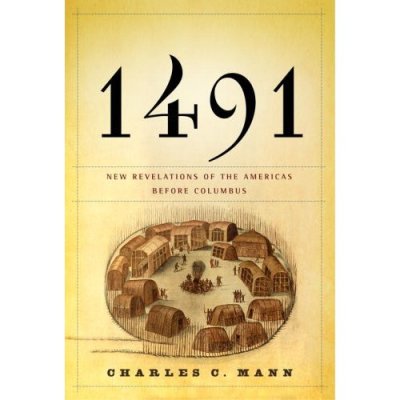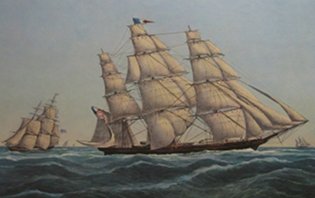 I have just finished reading 1491: New Revelations of the Americas Before Columbus. I highly recommend it, and may post some paragraphs from it over the next months to entice our readers.
I have just finished reading 1491: New Revelations of the Americas Before Columbus. I highly recommend it, and may post some paragraphs from it over the next months to entice our readers.
Among many other wonderful details, the book undermines the notions that the Europeans arrived to find a primeval land on which the Indians left hardly a footprint. Quite the opposite is true. For example, the Northeast Indians had 100-acre cornfields, scattered wherever the soil was rich, and did massive burnings of their woodlands every year to rewind forest succession, for game management, and to clear the underbush. They viewed the woods as their gardens and farms, and when they made fields, they cleared them to the point of removing the stumps. No slash-and-burn: permanent farm fields that were hard-won with stone axes and fire. The Pilgrims took advantage of their abandoned fields in Massachusetts.
Similarly, the Amazonian Indians turned the rain forest into their own orchards. At least 20% of the Amazonian forest is believed to be dominated by fruit- and nut-bearing trees planted by Indians for their use. That's not to mention their manioc plantations. And the South American Indians, like the Meso-Americans, developed massive irrigation systems to support their populations.
There was little of the New World that had not been shaped by Indian activities, except for the mountains and deserts - and the Incas populated the Andes quite successfully.
I also liked learning about the Indian prophet Deganawida, the Northeast "Peacemaker" born, it was said, of a virgin birth. Hiawatha, the great Indian orator and politician, was one of his followers. Some of those folks are some of my ancestors.
 Finally, the book got me interested in Cahokia, the largest Indian city north of Mexico with a top population of 15-20,000 farmers. The mound-building city in Illinois was abandoned 300 years before Columbus. Image on right is what Cahokia's mounds looked like.
Finally, the book got me interested in Cahokia, the largest Indian city north of Mexico with a top population of 15-20,000 farmers. The mound-building city in Illinois was abandoned 300 years before Columbus. Image on right is what Cahokia's mounds looked like.
(For a variety of reasons, many mysterious, the New World experienced enormous population declines from their millions before Columbus, making conquest and colonization immigration a much easier task. European illnesses like the common cold and flu viruses which could be fatal to Indians just made it all worse, it seems. )
Here's the Cahokia Website.


 I have just finished reading
I have just finished reading  Finally, the book got me interested in
Finally, the book got me interested in
This Italian (Genoa) adventurer in the employ of Spain didn't discover the New World but, with the help of people like Vespucci, he sure did help put it on the map. That is one heck of a world-changing achievement. New Spain! The Moriso
Tracked: Oct 10, 05:39
Tracked: Nov 10, 23:37
Tracked: Nov 23, 05:33
Tracked: Nov 23, 08:16
Tracked: Dec 12, 13:23